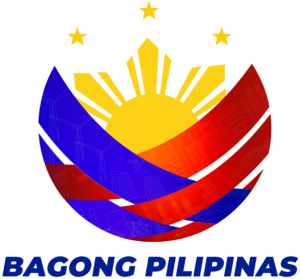Juan Paolo M. Calamlam
History Researcher II
National Historical Commission of the Philippines
This 2018, the Filipino nation is celebrating the 120th anniversary of the declaration of independence. This means that we celebrated this historic event, officially or not, for more than a hundred times now. Historians try to reconstruct these event using primary sources, such as the event program, memoirs and correspondences. One of the less known sources on the very first declaration of independence can be found in the letters of Gen. Artemio “Vibora” Ricarte, which can be accessed in microfilm at the Main Library of the University of the Philippines Diliman. The account of Gen. Ricarte serves as an interesting jigsaw piece in reconstructing the historic event.
Gen. Ricarte was among the privileged few who were invited to witness the declaration of independence in Kawit, Cavite on 12 June 1898. Indeed, Ricarte had the right to be there. After all, he led his troops to liberate San Francisco de Malabon (now Gen. Trias City) in Cavite on 31 August 1896, which became one of the first victories of the Katipunan.
Gen. Ricarte recounted the independence festivities in his letter to his friend Jose P. Santos dated 27 July 1928. The account shows Gen. Ricarte’s big yet unexpected role during the occasion (translated from original Filipino):
When the Declaration of Independence took place on the 12th of June, 1898, near the bridge of Cavite and beside the house of Gen. Aguinaldo, I, after being enthusiastically convinced by Gen. Trias, Gen. P. Alvares, Gen. Pantaleon Garcia, and many others, was forced to give a speech. I came there without any speech prepared; so, after I was pushed to the spot for speakers such as Mr. Felipe Buencamino and other experts in doing that, I looked for something that I could talk about. In front of the speakers was the flag, and because no one among the previous speakers told anything about it, I took the flag as the subject of discussion. I could say that the people liked my speech, because when I paused for a while, people shouted “mabuhay, mabuhay” and I was often congratulated by Mr. Buencamino and the others. Perhaps it was only then when the people learned the meaning of each symbol, the sun and three stars, and I was given a thundering and almost unending wave of hurray when I ended my speech: “My beloved countrymen, now that I introduced to you the true meanings of each symbol constituting the flag of our race, let us persevere to place her beside other flags like her, or better yet, let her fly above the others for the aggrandizement of the Philippines and the entire mankind.” When I ended my speech, I cued the band to play the music I brought from Mapagtiis [Katipunan name of San Francisco de Malabon], the “Marcha Nacional Filipina” composed by Prof. Mr. Felipe. That is why, when the Declaration of Independence took place on the 12th of June, 1898, I was the last one to deliver a speech.
Emilio Aguinaldo, in a letter to historian Emanuel Baja dated 11 June 1925, recounted that he saw Gen. Ricarte giving speech: “[The flag] was displayed to public view from that front window and General Ricarte spoke a few words of tribute to the idealism of the new flag.” Little did he know that Gen. Ricarte did not plan any of what happened. By stroke of luck or genius, Gen. Ricarte had chosen the right topic for the right time.
Going beyond Gen. Ricarte’s account, the people continued to show their love for the flag after the declaration of independence. Baja wrote in his book Philippine National Flag and Anthem (1936) that “during the short life of the Philippine Republic, crude and hand-made national flags were in evidence, everywhere, while silk and embroidered ones were not uncommon in the homes of the well-to-do families. In those days it was an established custom for the young ladies of a town or province to give hand-embroidered flags to the revolutionary army; the offer was considered a privilege and its acceptance a distinction.”
The Filipinos’ adoration for the flag was by no means an overreaction. Knowing that the Philippines had a national flag for the first time was indeed a reason to rejoice. Befitting the 12 June occasion, the flag became a symbol of our independence. It was the fruit of our ancestors’ struggles for freedom, as well as the reflection of their ideals and aspirations.
Stories about our flag such as Gen. Ricarte’s ought to be taught to the present generation. Stories like how Patrocinio Gamboa struggled just to bring the flag to Sta. Barbara, Iloilo in 1898, or how Rafael Palma and his colleagues fought in the legislature just to bring back our flag after it was banned by the 1907 Flag Act, are just some examples of such accounts. The 120th anniversary of the declaration of independence that we celebrate this year is the perfect opportunity to tell these tales, to inspire Filipinos, especially the youth, to give their share of love and respect for our national flag.





| Artemio Ricarte’s letter (in Filipino) to Jose P. Santos, part of which contains his recollections of the declaration of independence in 1898. From the University of the Philippines Diliman |

